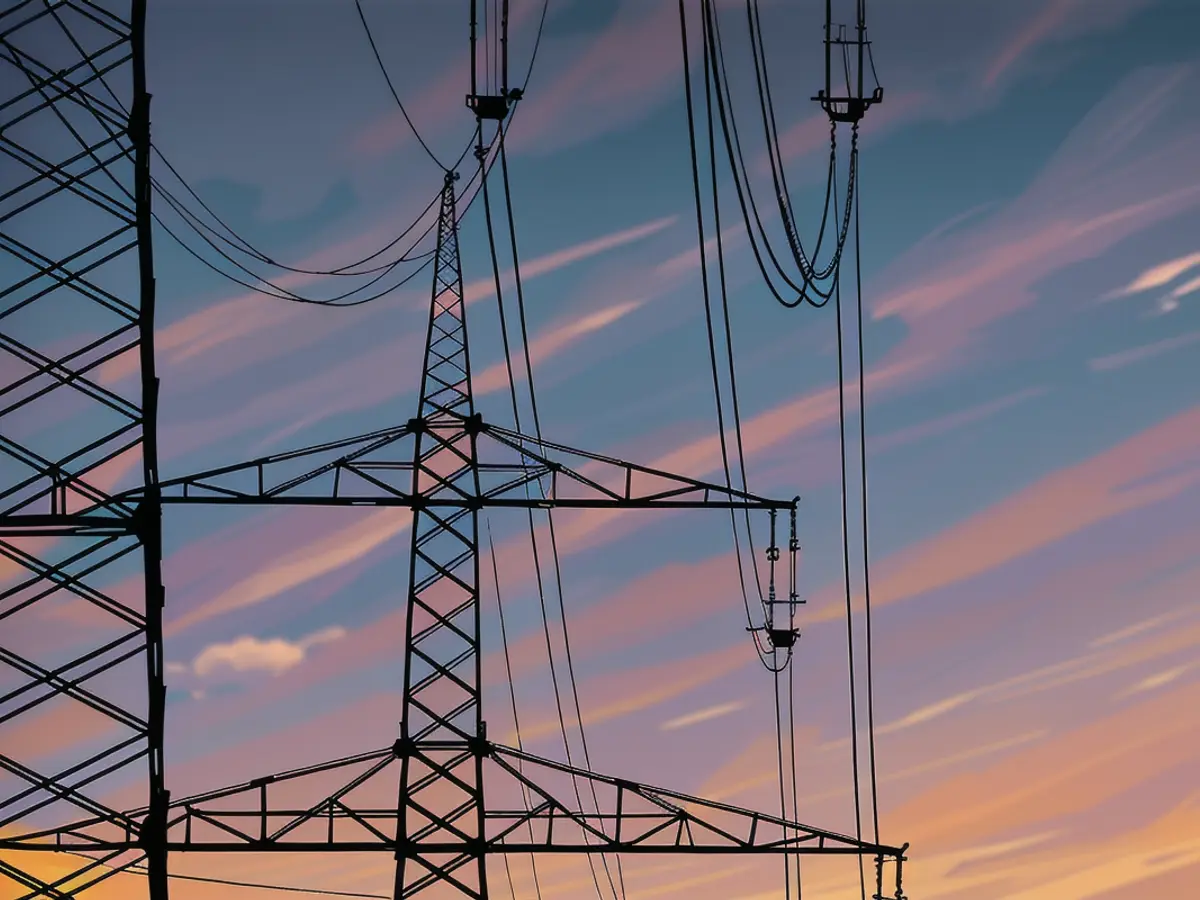Officials foresee significant cost reductions through the extension of outdoor power grids.
To prevent the dread known as "monster highways," the SPD and CDU brought about an earth cable priority for network growth in 2016. Now, various federal states are contemplating a change to overhead lines for cost efficiencies. The Federal Court of Auditors provides an insight into potential savings.
The Federal Network Agency has calculated how much money could be saved by not utilizing underground cables during the network expansion until 2045. According to the agency, "Based on recent projections, the investment sum without earth cables can be estimated at 284.7 billion euros." Currently, the agency assumes investments totaling roughly 320 billion euros for the expansion of the transmission grids until 2045. The difference between the two estimates amounts to 35.3 billion euros.
These new lines would help with a more even distribution of renewable energy in Germany, crucial to the development of a climate-neutral energy system. The estimated savings in the transmission network for connections to wind parks on land amount to 16.5 billion euros, per the Network Agency. It also suggested that "another 18.8 billion euros in savings could be realized when it comes to offshore connection lines, which have so far been planned with earth cables continuing into the hinterland."
In early 2016, the earth cable priority for large power highways took effect; instated by the coalition of CDU and SPD in hopes of enhancing societal acceptance of network expansion. However, several federal states are considering adopting less costly overhead lines instead of earth cables. According to a dpa survey.
Contrasting Approaches
The circumstances surrounding this decision are essential, as the costs of network expansion are eventually transferred to all electricity customers via network fees. The Network Agency is not privy to any technical or spatial factors that would discourage the implementation of earth cable projects as overhead lines. "The compatibility of network expansion projects with the objectives and principles of spatial planning can be assessed similarly for earth cable and overhead line projects," the agency added.
Still, due to contrasting methodologies in examining these endeavors, various routing options could ensue. Furthermore, if projects currently in the process of approval are switched from earth cables to overhead lines, we may witness delays. "The decision to adjust the earth cable preference would be a political one," stated a spokesperson from the agency. "We have always cherished that in the case of alternating current projects, the legislature makes the determination as to whether or not the initiatives are implemented as overhead lines or earth cables."
Read also:
The Federal Network Agency’s analysis reveals that the energy industry could potentially save 35.3 billion euros by using overhead lines instead of underground cables during the network expansion until 2045, as part of the energy transition. This discrepancy in costs could significantly impact the expenses borne by electricity customers through network fees, as decisions regarding cable types for network expansion projects are often politically driven.








